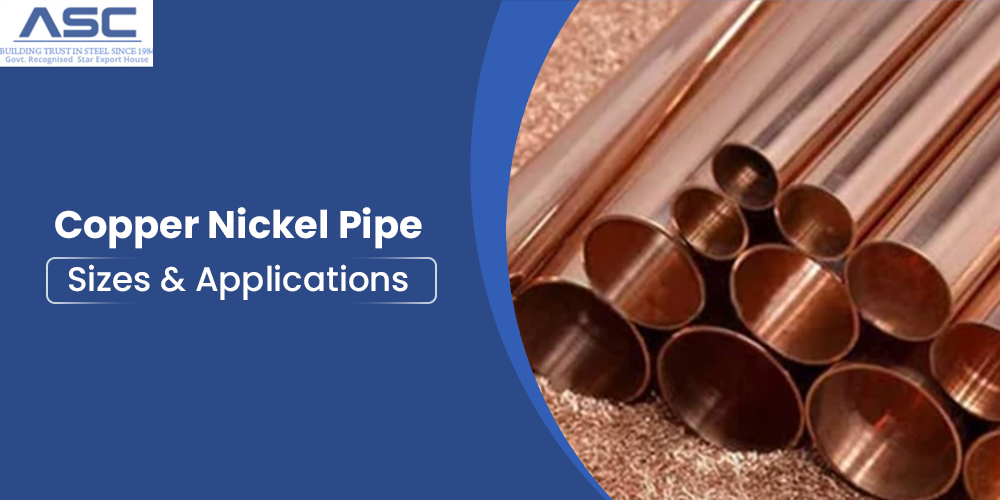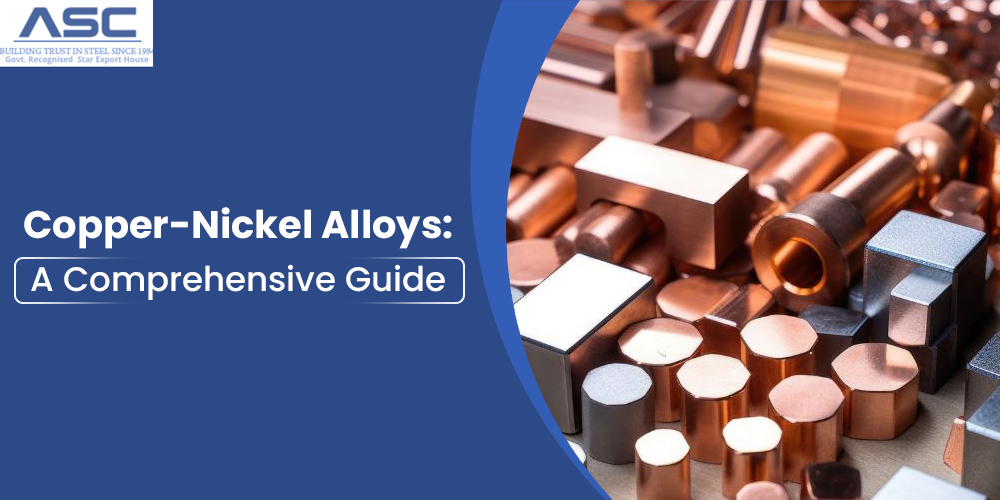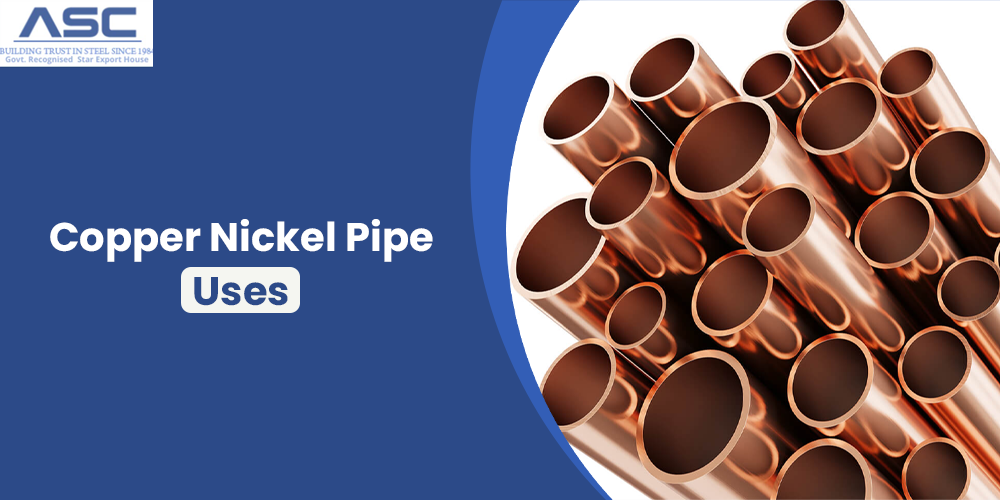Alloy Steel - Properties, Types, Uses & Grades
by AMC
Posted on December 29, 2022 at 02:05 PM

What is Alloy Steel?
Alloy steel is a type of steel that is mixed with other elements like molybdenum, manganese, nickel, chromium, vanadium, silicon, and boron. These alloying elements are added to make the metal stronger, tougher, harder, and more resistant to wear. The amount of alloying elements can be anywhere from 1% to 50%.
Here, you will learn about:
- Types of Alloy Steel
- Properties of Alloy Steel
- Uses of Alloy Steel
- Alloy Steel Grades & Specifications
Types of Alloy Steel
There are multiple subcategories of alloy steel. These include:
- Low-alloy steel
- High-strength low alloy (HSLA) steel
- High-alloy steel
- Stainless steel
- Microalloyed steel
- Advanced high-strength steel (AHSS)
- Maraging steel
- Tool steel
Alloying Elements
| ALLOY | SPECIFICATION | MAXIMUM USEFUL TEMPERATURE |
|---|---|---|
| Carbon-steel | SA178, SA192, | 850° |
| SA210, SA106, | ||
| SA515, SA516 | ||
| Carbon-1/2 | SA209 | 900° |
| Molybdenum | ||
| 1 1/4 Chromium- | SA213 T-11 | 1025° |
| 1/2 Molybdenum | SA335 P-11 | |
| 2 1/4 Chromium- | SA213 T-22 | 1075° |
| 1 Molybdenum | SA335 P-22 | |
| 18 Chromium- | SA213 TP304(H), | 1500° |
| 10 Nickel | 321(H), 347(H) |
Alloy Steel Properties
Alloy steels can include a lot of different elements. Each element can improve a different property of the steel, such as its resistance to mechanical stress, heat, and corrosion. Elements added in small amounts, less than about 5 wt.%, tend to improve mechanical properties, like hardenability and strength. Larger amounts, up to 20 wt.%, improve resistance to corrosion and stability at high or low temperatures [2].
The table below [2] shows what happens when different elements are added to steel and what the typical amounts are in terms of weight fraction.
| Element | Symbol | wt. % | Function |
|---|---|---|---|
| Aluminium | Al | 0.95–1.30 | Alloying element in nitriding steels |
| Bismuth | Bi | – | Improves machinability |
| Boron | B | 0.001–0.003 | Improves hardenability |
| Chromium | Cr | 0.5–2.0 | Improves hardenability |
| 4–18 | Corrosion resistance | ||
| Copper | Cu | 0.1–0.4 | Corrosion resistance |
| Lead | Pb | – | Improves machinability |
| Manganese | Mn | 0.25–0.40 | Prevents brittleness in combination with sulfur |
| >1 | Increases hardenability | ||
| Molybdenum | Mo | 0.2–0.5 | Inhibits grain growth |
| Nickel | Ni | 2–5 12–20 | Increases toughness Improves corrosion resistance |
| Silicon | Si | 0.2–0.7 | Increases strength and hardenability |
| 2 | Increases yield strength (spring steel) | ||
| Higher % | Increases magnetic properties | ||
| Sulfur | S | 0.08–0.15 | Improves machinability (free-machining steel properties) |
| Titanium | Ti | – | Reduces martensitic hardness in Cr steels |
| Tungsten | W | – | Increases hardness at high temperatures |
| Vanadium | V | 0.15 | Increases strength while maintaining ductility, promotes fine grain structure |
What is the alloy steel used for?
Hundreds of products can be created using alloy steels of varied compositions. These items include alloy steel pipes and tubes, alloy steel plates & sheets, and coils, alloy steel bars, rods, and wires, alloy steel forged fittings, alloy steel buttweld fittings, alloy steel flanges, fasteners, and more. Alloy steels are used in many industries, such as cars, mining, machinery and equipment, railways, road construction, buildings, appliances, and off-shore applications.
Applications in building large structures

Alloy steels are used for very large modern structures such as airports, bridges, skyscrapers, and stadiums in the form of the steel skeleton. Alloy steels have the high strength needed to hold up such big buildings. Even structures made of concrete use alloy steels as reinforcements to make the structures stronger and lighter. In the building and construction business, alloy steel is used to make small things like screws, nails, and bolts.
Applications in building bridges
Weathering steels, which are a type of alloy steel, are used to make bridges. Because nickel, copper, and chromium are used as alloying elements, these offer better protection against corrosion. Weathering steels are also used on the outside of buildings to make them look better. Weathering steel has a lot of benefits, such as high safety, easy and quick construction, good looks, shallow depth, low maintenance, and the ability to be changed in the future. Due to the way it naturally ages, it doesn't need to be painted, so it doesn't cause environmental problems like paint does. In the long run, weathering steels save a lot of money.
Alloy Steel Flat Products

Alloy steels are used to make plates and strips, which are flat items. There are many different Alloy Steel grades and sizes of plates. By welding plates together, these are made into sections that are used in building.
Alloy Steel Strip and Coil Products

Strips can be rolled hot or cold, and they can also be galvanised by being dipped in hot water. Hot-dipped galvanised coils are used to make building materials like wall and roof claddings, side rails, roof purlins, light steel frames, and lintels.
Alloy Steel Long Products

Alloy steels are used to make long products like girders, structural sections, bars, rails, rods, and wires that are used in the building industry.
Alloy Steel Flanges

Flanges are another important thing that are made out of alloy steels. These are used in pipes made of stainless steel. These flanges can be made in different ways to fit different needs. Some of them are weld neck flanges, which have the same thickness and bevel as the pipe and can work well in harsh conditions like high pressure, high temperature, or temperatures below zero. Lap joint flanges are slip-on flanges that can be used with alloy steel pipes that need to be checked and maintained regularly.
Alloy Steel Pipe Products

Alloy steel pipes are an important part of the building and construction industry because they are flexible, easy to fix without heat treatment, and last a long time. They are made of a mix of nickel, chromium, and stainless steel. Large-diameter welded pipes, electric fusion welded pipes, welded pipes, and seamless pipes are some of the special kinds of alloy steel pipes. In addition to high-pressure situations, they are also very useful in high-temperature or corrosive situations.
Providing Premium Alloy Steel Throughout India & Over All Over the World
Amardeep Steel is the India largest supplier of all types of steel alloy grades, metal, and metalworking accessories, including rust prevention products. Get in touch with our sales team for world class metals products and services today.
Check out our steel blog topics to learn more about Alloy steel today.


